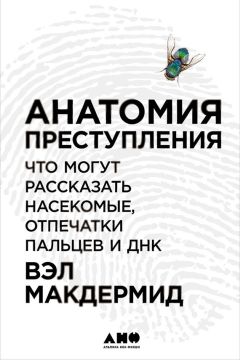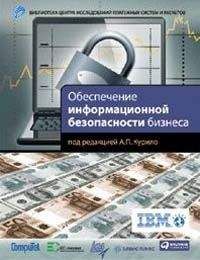Больше всего я признательна Эндрю Франклину, генеральному директору издательства Profile, он был первый, кому пришла в голову эта безумная идея, а также моему редактору Сесили Гейфорд, ее усилий с лихвой хватило бы, пожалуй, на десяток книг. Сесили, у меня в голове не укладывается, что ты ни разу не повысила голос. Я бы на твоем месте не выдержала.
И наконец, спасибо моему литературному агенту, неутомимой Джейн Грегори, на которую всегда можно положиться, и моей семье, которая всегда со мной во всех нуждах.
Arthur Appleton, Mary Ann Cotton: Her Story and Trial (London: Michael Joseph, 1973)
Bill Bass, Death's Acre: Inside the Legendary 'Body Farm' (London: Time Warner, 2004)
Colin Beavan, Fingerprints: The Origins of Crime Detection and the Murder Case that Launched Forensic Science (New York: Hyperion, 2002)
Carl Berg, The Sadist: An Account of the Crimes of Peter Kürten (London: William Heinemann, 1945)
Sue Black & Eilidh Ferguson, eds., Forensic Anthropology: 2000 to 2010 (London: Taylor & Francis, 2011)
Paul Britton, The Jigsaw Man: The Remarkable Career of Britain's Foremost Criminal Psychologist (London: Bantam Press, 1997)
David Canter, Criminal Shadows: Inside the Mind of the Serial Killer (London: HarperCollins, 1994)
David Canter, Forensic Psychology: A Very Short Introduction (Oxford: Oxford University Press, 2010)
David Canter, Forensic Psychology for Dummies (Chichester: John Wiley, 2012)
David Canter, Mapping Murder: The Secrets of Geographical Profiling (London: Virgin Books, 2007)
David Canter & Donna Youngs, Investigative Psychology: Offender Profiling and the Analysis of Criminal Action (Chichester: John Wiley, 2009)
Paul Chambers, Body 115: The Mystery of the Last Victim of the King's Cross Fire (Chichester: John Wiley, 2007)
Dominick Dunne, Justice: Crimes, Trials and Punishments (London: Time Warner, 2001)
Zakaria Erzinçlioğlu, Forensics: Crime Scene Investigations from Murder to Global Terrorism (London: Carlton Books, 2006)
Zakaria Erzinçlioğlu, Maggots, Murder and Men: Memories and Reflections of a Forensic Entomologist (Colchester: Harley Books, 2000)
Colin Evans, The Father of Forensics: How Sir Bernard Spilsbury Invented Modern CSI (Thriplow: Icon Books, 2008)
Stewart Evans & Donald Rumbelow, Jack the Ripper: Scotland Yard Investigates (Stroud: History Press, 2010)
Nicholas Faith, Blaze: The Forensics of Fire (London: Channel 4, 1999)
James Fallon, The Psychopath Inside: A Neuroscientist's Personal Journey into the Dark Side of the Brain (London: Current, 2013)
Roxana Ferllini, Silent Witness: How Forensic Anthropology is Used to Solve the World's Toughest Crimes (Willowdale, Ont.: Firefly Books, 2002)
Neil Fetherstonhaugh & Tony McCullagh, They Never Came Home: The Stardust Story (Dublin: Merlin, 2001)
Patricia Frank & Alice Ottoboni, The Dose Makes the Poison: A Plain-language Guide to Toxicology (Oxford: Wiley-Blackwell, 2011)
Jim Fraser, Forensic Science: A Very Short Introduction (Oxford: Oxford University Press, 2010)
Jim Fraser & Robin Williams, eds., The Handbook of Forensic Science (Cullompton: Willan, 2009)
Ngaire Genge, The Forensic Casebook: The Science of Crime Scene Investigation (London: Ebury Press, 2004)
Hans Gross, Criminal Investigation: A Practical Handbook for Magistrates, Police Officers, and Lawyers (London: Sweet & Maxwell, 5th edition, 1962)
Neil Hanson, The Dreadful Judgement: The True Story of the Great Fire of London, 1666 (London: Doubleday & Co., 2001)
Lorraine Hopping, Crime Scene Science: Autopsies & Bone Detectives (Tunbridge Wells: Ticktock, 2007)
David Icove & John DeHaan, Forensic Fire Scene Reconstruction (London: Prentice Hall, 2nd edition, 2009)
Frank James, Michael Faraday: A Very Short Introduction (Oxford: Oxford University Press, 2010)
Gerald Lambourne, The Fingerprint Story (London: Harrap, 1984)
John Lentini, Scientific Protocols for Fire Investigation (Boca Raton: CRC Press, 2013)
Douglas P. Lyle, Forensics for Dummies (Chichester: John Wiley, 2004)
Michael Lynch, Truth Machine: The Contentious History of DNA Fingerprinting (Chicago, London: University of Chicago Press, 2008)
Mary Manhein, The Bone Lady: Life as a Forensic Anthropologist (Baton Rouge: Louisiana State University Press, 1999)
Mary Manhein, Bone Remains: Cold Cases in Forensic Anthropology (Baton Rouge: Louisiana State University Press, 2013)
Mary Manhein, Trial of Bones: More Cases from the Files of a Forensic Anthropologist (Baton Rouge: Louisiana State University Press, 2005)
Alex McBride, Defending the Guilty: Truth and Lies in the Criminal Courtroom (London: Viking, 2010)
William Murray, Serial Killers (Eastbourne: Canary Press, 2009)
Niamh Nic Daéid, ed., Fifty Years of Forensic Science: a commentary (Oxford: Wiley-Blackwell, 2010)
Niamh Nic Daéid, ed., Fire Investigation (New York: Taylor & Francis, 2004)
Roy Porter, The Greatest Benefit to Mankind: A Medical History of Humanity from Antiquity to the Present (London: HarperCollins, 1997)
John Prag & Richard Neave, Making Faces: Using Forensic and Archaeological Evidence (London: British Museum Press, 1997)
Fiona Raitt, Evidence: Principles, Policy and Practice (Edinburgh: Thomson W. Green, 2008)
Kalipatnapu Rao, Forensic Toxicology: Medico-legal Case Studies (Boca Raton: CRC Press, 2012)
Mike Redmayne, Expert Evidence and Criminal Justice (Oxford: Oxford University Press, 2001)
Mary Roach, Stiff: The Curious Lives of Human Cadavers (London: Viking, 2003)
Jane Robins, The Magnificent Spilsbury and the Case of the Brides in the Bath (London: John Murray, 2010)
Andrew Rose, Lethal Witness: Sir Bernard Spilsbury, Honorary Pathologist (Stroud: Sutton, 2007)
Edith Saunders, The Mystery of Marie Lafarge (London: Clerke & Cockeran, 1951)
Keith Simpson, Forty Years of Murder (London: Panther, 1980)
Kenneth Smith, A Manual of Forensic Entomology (London: Trustees of the British Museum (Natural History), 1986)
Clive Stafford-Smith, Injustice: Life and Death in the Courtrooms of America (London: Harvill Secker, 2012)
Maria Teresa Tersigni-Tarrant and Natalie Shirley, eds, Forensic Anthropology: An Introduction (Boca Raton: CRC Press, 2013)
Brent E. Turvey, Criminal Profiling: An Introduction to Behavioral Science (Amsterdam; Oxford: Academic Press, 2012)
Francis Wellman, The Art of Cross-examination: With the Cross-examinations of Important Witnesses in Some Celebrated Cases (New York: Touchstone Press, 1997)
P. C. White, ed., Crime Scene to Court: The Essentials of Forensic Science (Cambridge: Royal Society of Chemistry, 2004)
James Whorton, The Arsenic Century: How Victorian Britain was Poisoned at Home, Work and Play (Oxford: Oxford University Press, 2010)
Caroline Wilkinson, Forensic Facial Reconstruction (Cambridge: Cambridge University Press, 2008)
Caroline Wilkinson & Christopher Rynn, Craniofacial Identification (Cambridge: Cambridge University Press, 2012)
George Wilton, Fingerprints: Scotland Yard and Henry Faulds (Edinburgh: W. Green & Son, 1951)
Благодарности за иллюстрации
Мы приложили все усилия, чтобы связаться с обладателями прав на иллюстрации. Тем не менее автор и издатели будут признательны за информацию относительно тех случаев, где обладателя не удалось обнаружить: мы внесем уточнения в последующих изданиях книги.
Глава 1. Место преступленияПолицейский констебль Шарон Бешенивски. Фото: Getty Images.
Эдмон Локар, который открыл криминалистическую лабораторию в Лионе. Фото: Maurice Jarnoux / Paris Match via Getty Images.
Эксперты обследуют место убийства Шарон Бешенивски. Фото: Getty Images.
Глава 2. Расследование пожаровМайкл Фарадей, чья книга «Химическая история свечи» проложила путь изучению мест пожаров. Фото: Wellcome Library, London.
Следователи на месте пожара в дискотеке Stardust, в ходе которого 48 человек погибли и более 240 получили травмы. Фото © The Irish Times.
Окаменелые остатки диатомеи – одноклеточной водоросли – под микроскопом. Фото: Spike Walker / Wellcome Images.
Глава 3. ЭнтомологияСтраница из рукописной копии «Собрания отчетов о снятии несправедливых обвинений» китайского учебника судебной медицины (XIX век). Фото: Wellcome Library, London.
Фотография Изабеллы Ракстон, наложенная на фотографию черепа, найденного в овраге, помогла уличить Бака Ракстона. Фото из архива Университета Глазго.
Дэвид Уэстерфилд в суде высшей инстанции (Сан-Диего, Калифорния). Фото: Getty Images.
Глава 4. Патологическая анатомияДоктор Хоули Криппен и его любовница Этель Ле Нев в зале Центрального уголовного суда в Лондоне. Криппена осудят за убийство и приговорят к смерти, а Ле Нев отпустят на свободу. Фото: Pictorial Press / Alamy.
Образцы ткани, представленные Спилсбери. Показан шрам на найденном в подвале. Фото © The Royal London Hospital Archives and Museum.
Джордж Смит и Бесси Уильямс в день свадьбы. Вскоре она станет его первой жертвой. Фото: TopFoto.
Бернард Спилсбери. Фото: TopFoto.
Глава 5. ТоксикологияМари Лафарж, которую осудили за отравление мышьяком ее мужа Шарля. Она подмешала мышьяк в эггног. Фото: Wellcome Library, London.
Реклама того времени: крем для лица на основе радия, «по формуле доктора Альфреда Кюри». Фото: Science Photo Library.
Девять «радиевых девушек». В ходе работы они красили циферблаты часов радиолюминесцентной краской и получили сильное радиационное отравление. Фото: PA Photos.
Серийный убийца Гарольд Шипман и письмо, сопровождавшее поддельное завещание его последней жертвы Кэтлин Гранди. Фото: PA Photos.
Аконит (борец, голубой лютик). Симптомы отравления: тошнота, рвота, жжение и покалывание в конечностях, затрудненное дыхание. Если не принять срочных мер, смерть наступает через 2–6 часов. Фото: Wellcome Library, London.
Глава 6. ДактилоскопияИз картотеки Бертильона. Данные на 21-летнего Гиоргио Джиролами, арестованного за мошенничество. Фото: adoc-photos / Corbis.
Сотрудник уголовного розыска изучает в картотеке Скотланд-Ярда новые отпечатки пальцев (1946 год). Фото: Getty Images.
Отпечатки пальцев Бака Ракстона, снятые в Ливерпульской тюрьме (1936 год). University of Glasgow Archive Services, Department of Forensic Medicine & Science Collection, GB0248 GUAFM2A / 25.
Испанские судмедэксперты ищут следы после теракта в мадридских поездах. Фото: Pierre-Philippe Marcou / AFP / Getty Images.




